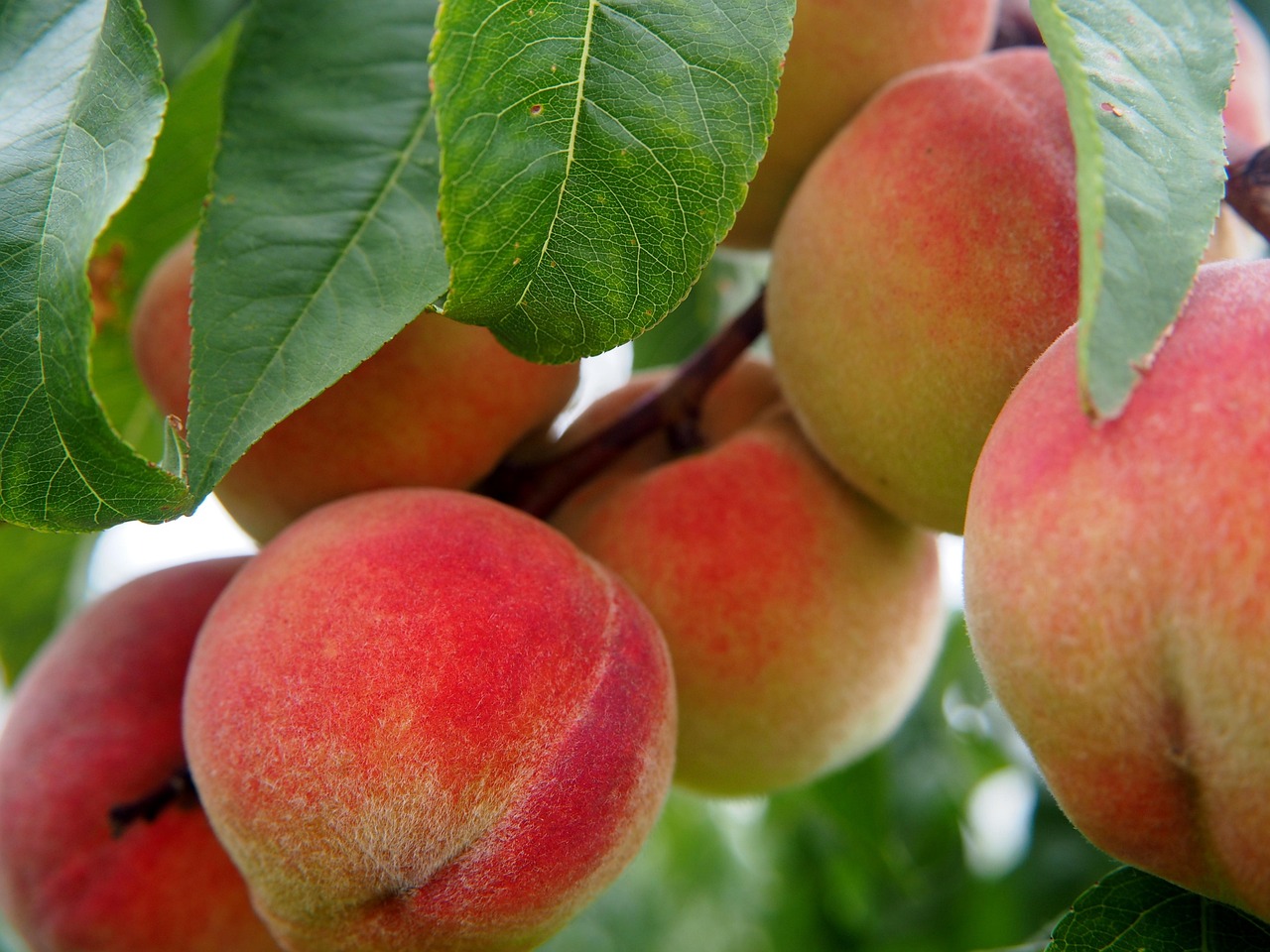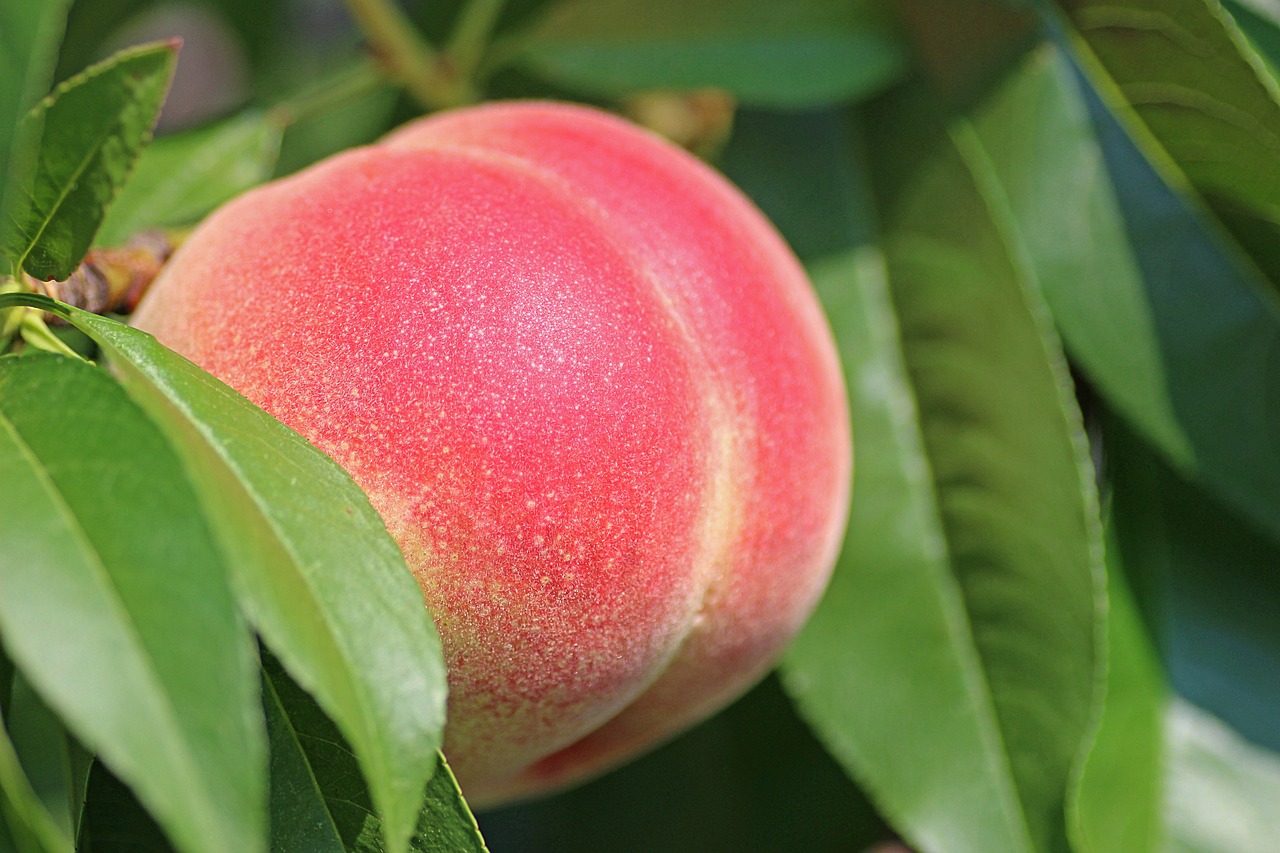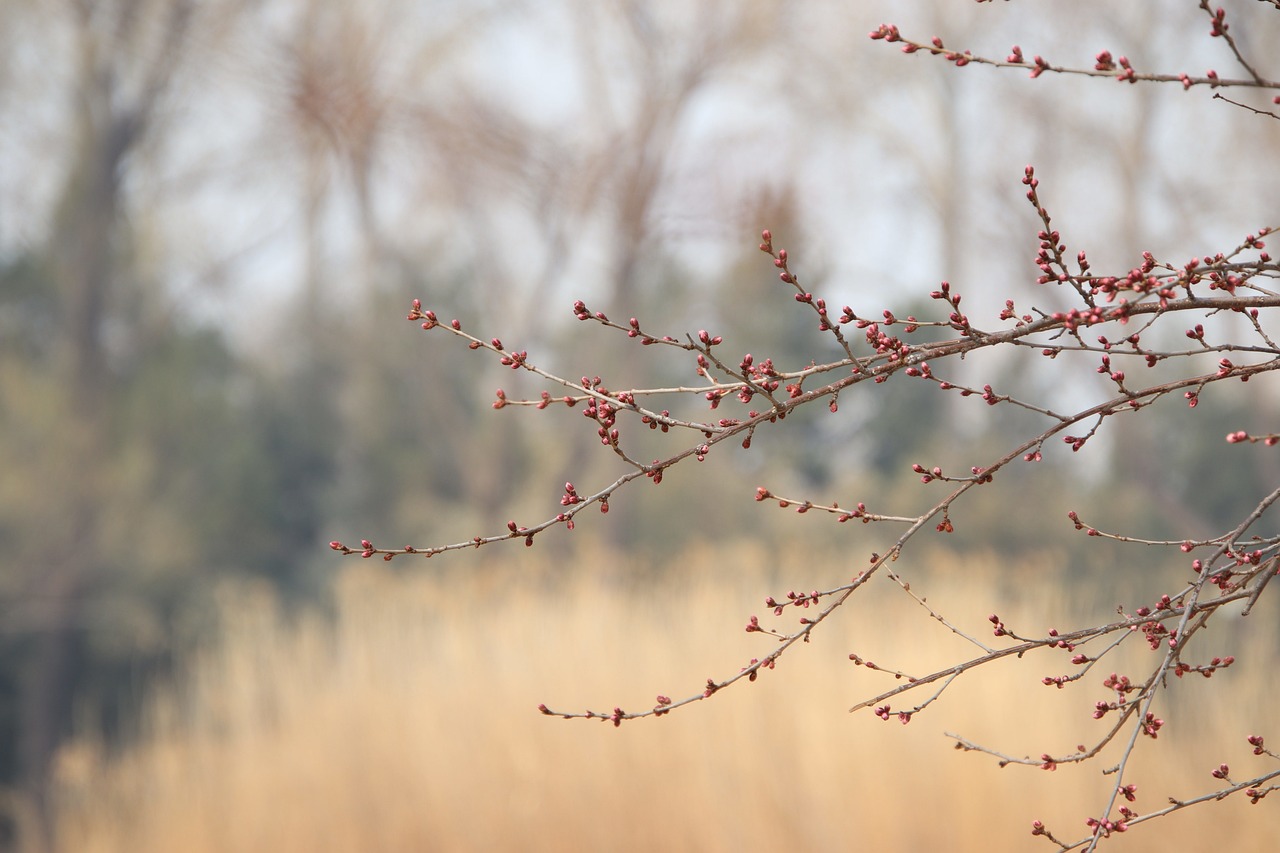Pruning young peach trees is essential for maximizing yield. The best methods include thinning out branches, shaping the tree for sunlight exposure, and removing any damaged or diseased wood. Proper timing and techniques ensure healthier growth and fruit production.
Young peach trees require careful attention to pruning practices to ensure they grow strong and produce abundant fruit. Pruning is not just about cutting branches; it involves understanding the tree’s growth patterns and providing the proper structure for future development. Young trees benefit from pruning because it helps them establish a solid framework, encourages healthy growth, and can significantly enhance fruit yield.

The ideal time to prune young peach trees is during their dormant season, typically in late winter. This timing allows you to assess the tree’s structure without the distraction of foliage. However, some light pruning can also be done in early spring before the buds open. The goal is to create an open center, allowing sunlight to penetrate the tree and air to circulate freely among the branches.
Understanding Peach Tree Growth
Peach trees grow in a specific manner that affects how they should be pruned. Understanding their growth habits is crucial for successful pruning. Young peach trees typically exhibit a central leader growth habit, meaning they have one dominant trunk with side branches. This structure must be maintained to promote healthy development.
- Central Leader: The main trunk should be the tallest part of the tree, supporting side branches.
- Side Branches: These should be spaced evenly around the trunk for balanced growth.
- Height Management: Keeping a manageable height is important for harvesting and maintenance.
The first few years of a peach tree’s life are critical for setting up its structure. During these years, the tree should be trained to develop a strong framework that supports fruit production in later years. Proper pruning techniques will help ensure that the tree grows in a way that maximizes fruit yield while minimizing disease risk.

Pruning Techniques for Young Peach Trees
Several pruning techniques can be applied to young peach trees to achieve optimal results. The main methods include thinning, heading back, and shaping. Each technique serves a specific purpose and can be utilized based on the tree’s needs.
Thinning
Thinning involves removing some of the branches to reduce overcrowding. This technique helps improve air circulation and allows more sunlight to reach the interior of the tree. Thin branches that cross each other or are growing inward toward the center of the tree.
Heading Back
Heading back is another effective pruning method. This involves cutting back the tips of branches to encourage bushier growth. It is particularly useful for young trees as it promotes lateral branching, which can lead to more fruiting wood.

Shaping
Shaping is crucial for establishing a strong structure. Shape the tree into an open center or vase shape, which facilitates better light penetration and air flow. This shape helps prevent fungal diseases and ensures that fruit can develop evenly.
Tools Needed for Pruning
Having the right tools is essential for effective pruning. Here are some tools that every peach tree owner should consider:
| Tool | Description |
|---|---|
| Pruning Shears | For making precise cuts on small branches. |
| Loppers | For cutting larger branches that are too thick for shears. |
| Saw | A small saw for removing larger limbs. |
| Gloves | To protect your hands while working. |
| Ladder | For reaching higher branches safely. |
Before starting your pruning session, ensure that all tools are clean and sharp. This practice reduces the risk of spreading diseases between trees and allows for cleaner cuts that heal better.

The importance of regular pruning cannot be overstated. Not only does it affect the tree’s health, but it also influences its productivity. Pay attention to how your tree responds to pruning, and adjust your methods accordingly in subsequent years. With proper care and attention, your young peach tree can flourish and produce high yields of delicious fruit.
Timing Your Pruning
The timing of pruning is vital for the health and productivity of young peach trees. Understanding the seasonal growth patterns of these trees will help you determine the most effective times for pruning. Proper timing helps minimize stress on the tree and encourages optimal growth.
Winter Dormancy
The best time to prune peach trees is during their dormant period, which usually occurs in late winter, before new growth begins. This timing allows for easier visibility of the tree’s structure and helps minimize sap loss. Pruning during dormancy also reduces the risk of fungal infections, as most diseases are less active in the cold.
Early Spring Pruning
In some cases, light pruning can be done in early spring before the buds open. This is particularly useful for removing any dead or damaged wood that may have been overlooked during the dormant season. Early spring pruning can also help shape the tree as it begins to grow.
Common Mistakes in Pruning Young Peach Trees
Pruning can be tricky, especially for beginners. Understanding common mistakes can help you avoid them and ensure your young peach trees thrive. Here are some mistakes to watch out for:
- Over-Pruning: Cutting too much can stress the tree and reduce yield. Aim for a balanced approach.
- Ignoring the Shape: Failing to maintain the desired shape can lead to poor sunlight exposure and airflow.
- Pruning at the Wrong Time: Pruning too late in the spring can damage developing buds.
- Neglecting Tool Maintenance: Using dull or dirty tools can lead to jagged cuts and potential disease spread.
Avoiding these mistakes will help you maintain healthy trees and encourage robust fruit production. Take your time when pruning and always evaluate the tree’s response after each session.
Signs Your Peach Tree Needs Pruning
Recognizing when your peach tree needs pruning is crucial for its overall health. Several signs indicate that it’s time to take action:
- Crowded Branches: If branches are crossing or crowded, this is a clear sign that thinning is necessary.
- Dead or Damaged Wood: Any portions of the tree that are dead or diseased should be removed promptly.
- Pest Infestation: If you notice pests or signs of disease, pruning affected areas can help control the problem.
- Poor Growth: If your tree shows signs of slow growth or small fruit, it may need reshaping or thinning.
Regular monitoring of your peach tree will allow you to catch these issues early and respond with appropriate pruning techniques.
The Role of Fertilization in Pruning Success
Fertilization plays a significant role in the health of young peach trees, especially following a pruning session. When you prune, you remove a portion of the tree that was previously contributing to its energy production. To compensate for this loss, proper fertilization is essential.
Choosing the Right Fertilizer
Selecting a balanced fertilizer with adequate nitrogen, phosphorus, and potassium is important for young peach trees. Here are some fertilizer options to consider:
- Granular Fertilizer: Slow-release options can provide nutrients over time.
- Liquid Fertilizer: Can be quickly absorbed by the tree and is great for immediate nutrient support.
- Organic Options: Composts or manure can enrich the soil naturally.
Applying Fertilizer
The best time to fertilize is right after pruning, during the active growing season. Follow these steps when applying fertilizer:
- Clear away debris around the base of the tree.
- Spread the fertilizer evenly around the root zone, avoiding direct contact with the trunk.
- Water thoroughly after application to help nutrients penetrate the soil.
Adequate fertilization supports recovery from pruning stress and encourages healthy growth throughout the season.
Pest and Disease Management in Young Peach Trees
Pest and disease management is an essential aspect of maintaining healthy young peach trees. Pruning not only helps improve air circulation but also reduces the risk of infestations by removing damaged wood where pests may thrive.
Common Pests
A few pests frequently affect peach trees, including:
- Peach Tree Borer: This pest bores into the trunk and can cause serious damage.
- Aphids: Small insects that sap nutrients from leaves, leading to poor growth.
- Spider Mites: Tiny pests that cause stippling on leaves and can lead to leaf drop.
Disease Prevention
The most common diseases affecting peach trees include:
- Bacterial Spot: Causes leaf spots and defoliation; proper air circulation helps prevent this issue.
- Curl Leaf: Results in distorted leaves; early-season pruning can help minimize its spread.
Regular inspections and timely interventions with appropriate treatments will keep your young peach trees healthy and productive.
Training Young Peach Trees
Training is an essential practice that complements pruning and helps shape young peach trees. By guiding the growth of the tree, you can ensure it develops a strong structure that supports future fruiting. There are various training methods, each with specific goals and techniques.
Types of Training Methods
Here are some commonly used training methods for young peach trees:
- Central Leader System: This method involves maintaining a single dominant trunk, encouraging side branches to grow evenly around it. This is ideal for most peach varieties.
- Open Center System: In this approach, the tree is pruned to have multiple main branches that spread out from a central point. This allows for better sunlight penetration and air circulation.
- Modified Leader System: A combination of the central leader and open center, this method provides a strong trunk while allowing for several prominent branches.
Choosing the right training method depends on the specific variety of peach tree and your desired outcome for fruit production. The central leader system is widely used because it helps maintain a manageable height and encourages fruiting on lower branches.
Steps for Training Young Peach Trees
Training young peach trees requires careful steps to ensure proper growth. Follow these guidelines:
- Select Strong Scaffolding Branches: Choose 3 to 5 strong branches that will serve as scaffolding. These should be spaced evenly around the trunk.
- Remove Competing Leaders: If any competing leaders emerge, remove them to promote the growth of the chosen central leader.
- Pinch New Growth: As new growth emerges, pinch back the tips to encourage bushiness and lateral branching.
- Monitor Growth: Regularly assess the tree’s growth and adjust as necessary, removing any unwanted or weak branches.
Proper training will help create a well-structured tree that can support a heavy fruit load as it matures.
Nutrient Management for Optimal Growth
Nutrient management is critical for young peach tree development. Proper nutrition not only supports growth but also enhances the effectiveness of pruning and training efforts. Here are some key nutrients essential for peach trees:
- Nitrogen: Promotes leafy growth; however, excess nitrogen can lead to poor fruit development.
- Phosphorus: Encourages root development and flowering, vital for fruit production.
- Potassium: Supports overall tree health and fruit quality.
Soil Testing
Before applying fertilizers, conduct a soil test to understand the nutrient levels in your soil. This will help you determine what amendments are necessary. Soil tests can be done through local agricultural extensions or specialized labs.
Fertilization Schedule
A fertilization schedule tailored to the growth cycle of your peach tree is essential. Here’s a general guideline:
- Early Spring: Apply a balanced fertilizer after pruning, as the tree begins to break dormancy.
- Mid-Summer: A light application of fertilizer can support continued growth but avoid late-season fertilization that may encourage new growth before winter.
- Fall: A final application of potassium-rich fertilizer can prepare the tree for winter dormancy.
This schedule can vary depending on specific soil needs and local conditions, so always refer to soil test results for precise guidance.
Watering Practices for Young Peach Trees
Watering is another crucial aspect of maintaining healthy young peach trees. Adequate moisture supports root development and overall tree vigor, especially during critical growth periods.
Watering Frequency
Younger trees typically require more frequent watering than mature ones. Here are some tips for effective watering:
- Frequency: Water young trees at least once a week during dry spells. Adjust frequency based on rainfall and temperature.
- Deep Watering: Water deeply to encourage roots to grow deeper into the soil. Aim for 1 to 2 feet deep when irrigating.
- Avoid Overwatering: Monitor soil moisture to prevent root rot. The soil should be moist but not waterlogged.
Irrigation Methods
Several irrigation methods can be used for young peach trees, including:
- Drip Irrigation: Efficient and conserves water by delivering it directly to the root zone.
- Soaker Hoses: These can be laid out around the tree base and will slowly release moisture into the soil.
- Hand Watering: Useful for small orchards or individual trees, ensuring targeted application.
Selecting the right irrigation method can help maintain optimal moisture levels and support healthy growth as your peach trees mature.
Additional Considerations for Young Peach Tree Care
While pruning, training, watering, and fertilization are essential for the health of young peach trees, there are a few additional considerations that can further enhance their growth and productivity. These factors include pest management strategies, mulching, and seasonal care practices.
Pest Management Strategies
Effective pest management is crucial for maintaining the health of your young peach trees. Regular monitoring for pests and diseases can prevent infestations from becoming severe. Here are some strategies to consider:
- Regular Inspections: Frequently check leaves, stems, and fruit for signs of pests or disease.
- Beneficial Insects: Encourage beneficial insects like ladybugs and lacewings that prey on harmful pests.
- Organic Treatments: Use organic pesticides or natural remedies when necessary, following label instructions carefully.
- Companion Planting: Planting certain flowers or herbs nearby can deter pests naturally. Marigolds, for example, can repel aphids.
Mulching Practices
Applying mulch around the base of young peach trees provides several benefits:
- Moisture Retention: Mulch helps retain soil moisture, reducing the frequency of watering needed.
- Weed Suppression: A layer of mulch can inhibit weed growth, which competes with the tree for nutrients and water.
- Soil Temperature Regulation: Mulch maintains a more consistent soil temperature, protecting roots from extreme heat or cold.
When applying mulch, use organic materials like wood chips, straw, or grass clippings. Ensure that the mulch is not piled against the trunk to prevent rot and pest attraction.
Seasonal Care Practices
Throughout the year, specific seasonal care practices can enhance the growth and yield of young peach trees:
- Spring: After pruning, ensure that your trees receive adequate water and nutrients. Monitor for signs of pests as new growth emerges.
- Summer: Continue to water regularly, especially during dry periods. Apply additional fertilizer if needed based on soil tests.
- Fall: As temperatures cool, prepare your trees for winter by ensuring they are well-watered before dormancy. Apply a balanced fertilizer to support root development.
- winter: Protect young trees from harsh winter weather by wrapping their trunks or covering the base with mulch to insulate roots.
Final Thoughts
Caring for young peach trees through proper pruning methods is vital for maximizing yield and ensuring long-term health. Understanding the importance of timing, techniques, training, watering, and nutrient management can significantly impact your trees’ growth and fruit production. By avoiding common mistakes and implementing effective pest management strategies, you create an environment where your trees can thrive.
As you implement these practices, remember that patience is key. Young peach trees may take a few years to produce fruit, but with diligent care, they will reward you with delicious peaches for many seasons to come. By combining all these elements—pruning, training, watering, fertilization, pest management, and seasonal care—you set the stage for fruitful harvests in the future.
Ultimately, the journey of nurturing young peach trees is both rewarding and educational. Each tree presents unique challenges and opportunities for growth. Stay observant and engaged with your trees’ needs to enjoy the full benefits of your efforts in cultivating a thriving peach orchard.
